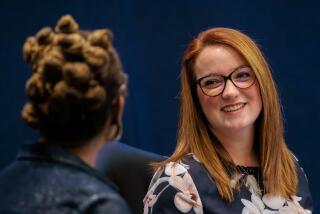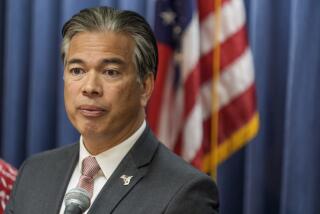Get the 411 on 818
- Share via
When Assemblyman Wally Knox (D-Los Angeles) began to look into his constituents’ complaints about an area code overlay, phone companies told him the issue was too complex for nonprofessionals to understand.
Fortunately for us consumers, Knox didn’t buy that nonexplanation. He directed his staff to research the issue, and based on that research, introduced legislation, Assembly Bill 818, to reform the area code system.
The Times Valley Edition is providing today’s coverage of the 818 overlay question so that readers can educate themselves--and have a say in how their phone numbers will be determined. We urge you to learn more by attending a community meeting called by state Sen. Richard Alarcon (D-Sylmar) at 6 p.m. Thursday at the Van Nuys State Building, 6150 Van Nuys Blvd. Alarcon has invited Knox as well as representatives of the Public Utilities Commission, area chambers of commerce and telephone companies to take part.
The overlay plan proposed for the San Fernando Valley would mean that residents could keep the 818 area code as long as they already had a phone line. New lines, even those within the same house or business, would be given a new, as yet undetermined area code. All callers would have to dial 11 digits--1 plus the area code plus the number--even for calls to the same area code.
Telecommunications companies argue that an overlay is preferable to splitting the 818 area code geographically. A split would pit community against community over who would keep the old number and who would bear the inconvenience and expense of changing area codes.
Knox is not convinced we have to choose between the chaos caused by dividing an area code and that caused by an area code overlay. He argues that there are plenty of numbers to go around if the PUC would come up with a better way to distribute them. His legislation calls for such reforms as technology-based area codes--that is, giving cell phones, modems and pagers their own area code--and the allocation of phone numbers in blocks of 1,000 rather than the current 10,000, many of which go unused.
The measure received the approval of the Senate Committee on Energy, Utilities and Communications--with Alarcon’s help--before the Legislature recessed July 16. It must still go before the Senate Appropriations Committee and then to a vote by the full Senate.
In the meantime, we invite you to educate yourself by examining both sides of the issue, as presented on page B-1 and on the Valley Perspective page opposite this one.
More to Read
Get the L.A. Times Politics newsletter
Deeply reported insights into legislation, politics and policy from Sacramento, Washington and beyond. In your inbox twice per week.
You may occasionally receive promotional content from the Los Angeles Times.










